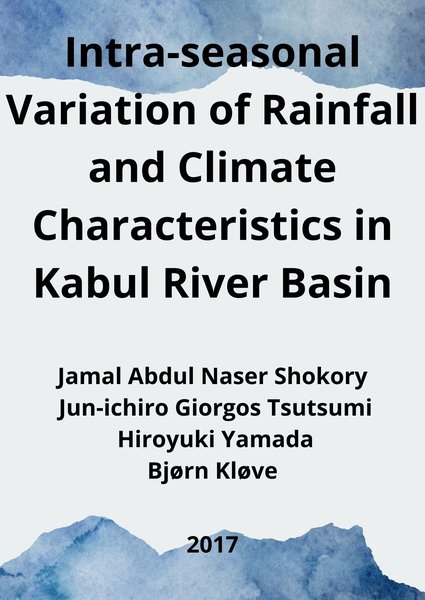




Year: 2017
Collections: Scientific Publications
Topics: Water, Climate
Authors: Klove B., Shokory Jamal Abdul Naser, Tsutsumi Jun-ichiro Giorgos, Yamada Hiroyuki
Countries: Afghanistan
Source: Central Asian Journal of Water Research
Downloads:
In Afghanistan, spring and summertime flash floods result in 54.3% of all natural disasters with an average annual economic loss of US$92.17 million between 1990 and 2014. Knowledge of climate and rainfall periodicity are urgently needed for urban and rural land use and infrastructure planning, and their flood protection. In this study, the Thornthwaite equation was used to determine the seasonal characteristics of dry and wet periods. Spectral Analysis of precipitation was carried out to search for periodicities and intraseasonal oscillations of rainfall within the Kabul River Basin. The analysis is based on data obtained from 49 ground-base stations with three parameters (precipitation, relative humidity, and temperature) for an 8-year (2006-2013) and 5-year (2009-2013) record. Five years weather maps made from JRA-55 (55 year Japan Reanalysis data) were used to recognize the moisture trajectory in each season.The results indicated that Kabul River Basin is divided into three parts with distinct climate regions as Central, Northern, and Eastern parts. The Weather maps of relative humidity with wind arrows showed the origins and pathways of air masses leading to heavy rainfall from the Arabian Sea and the Caspian Sea approaching from the west and northwest of Afghanistan in winter and spring season, corresponding to 10-day spectral peaks. In summer and autumn, influences of South Asian summer monsoon were recognized by 6-8 days of oscillation with different density in each station, where it was much significant in the Eastern part.
По всем вопросам сотрудничества обращайтесь по эл.адресу или телефону: